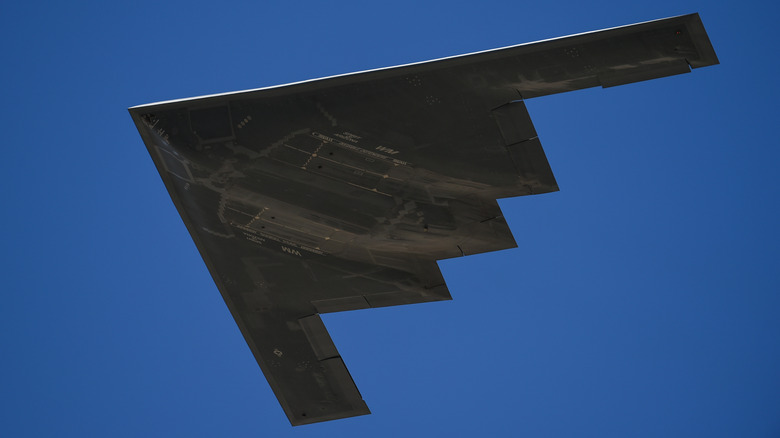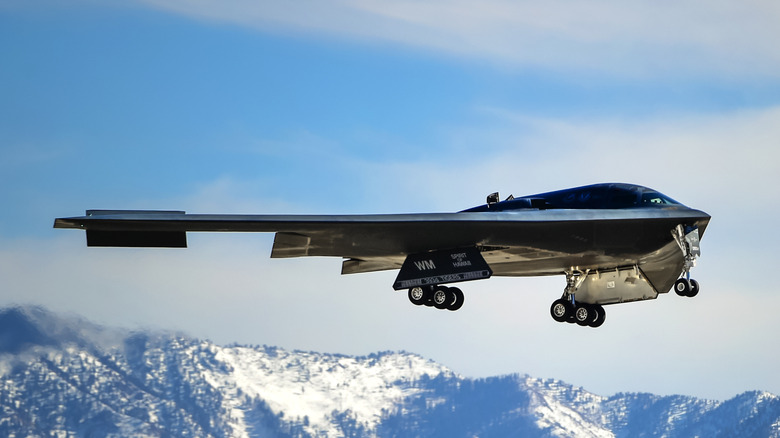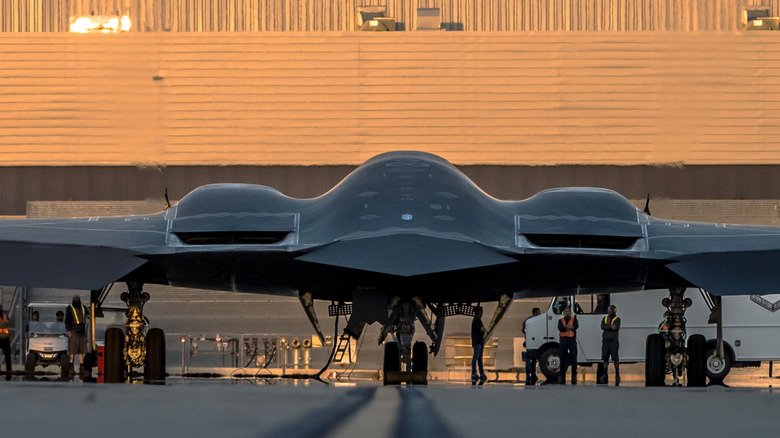Why The B-2 Spirit Stealth Military Bomber Costs Around 2 Billion Dollars
In June 2025, the U.S. deployed the B-2 Spirit stealth bomber to destroy strategic nuclear sites in Iran, an operation that was deemed a "very successful attack" by President Donald Trump. The mission once again brought the spotlight back on the country's aerial crown jewel and its cross-continental destructive capabilities that come courtesy of a staggering 40,000 pounds payload capacity and aerial refueling facility. In addition to its warfare virtues, the debate around its staggering price and operational costs has once again entered the public discussion forum, especially the $2 billion per unit cost.
Developed in partnership with Northrop Grumman, each B-2 Spirit stealth bomber costs $1.157 billion as per 1998 fiscal constant dollar estimates. As of 2025, the ownership cost exceeds $2 billion for each unit of this multi-role heavy bomber. Now, there is a lot of debate about the cost incurred on developing this bomber jet, and whether it has proved to be a worthwhile defense investment. If one were to look at it solely from the technical stack perspective, the B-2 Spirit's credentials are definitely quite impressive.
Touted to be "one of the most survivable aircraft in the world" and authorized to carry nukes, the B-2 Spirit's stealth capabilities allow it to penetrate the most sophisticated defense systems out there and drop devastating bunker-busting missiles. In fact, the B2 bomber's stealth technologies remain a heavily guarded secret. Moreover, its single-fuel range of 6,000 nautical miles makes it an ideal carriage for long-range missions.
What makes it special?
There are numerous aspects about the B-2 Spirit that make it a special aerial vehicle, irrespective of the costs. For example, it is one of the few defense carriers that combines heavy ordinance delivery, stealth, and long-range flight on a single platform. When it flew for the first time during the Operation Allied Force, two bombers were airborne for over 31 hours, attacked enemy spots, and returned back to the base. Notably, the jets flew nonstop from the U.S. military base in Missouri, straight to the capital of Serbia for the mission.
"The B-2s flew less than 1 percent of the total missions, yet destroyed 33 percent of the targets during the first eight weeks of conflict," notes Northrop Grumman. In 2001, when the B-2 Spirit engaged in a mission lasting 44 hours, it set a record for the longest air combat mission in military history. For a mission lasting 70 hours of consecutive flight, the multi-purpose bomber jet only required a 45-minute pit stop for service and maintenance without ever shutting off its four General Electric F118-GE-100 turbofan engines.
Capable of reaching high subsonic speeds and flying at an altitude of up to 50,000 feet, it can reach any point in the world with no refueling. Technically, it can reach over 10,000 nautical miles with a single aerial refueling session while carrying a payload close to 20 tons. But what makes it truly lethal is the low-observability, which is a result of its signature design, special surface coating, "reduced infrared, acoustic, electromagnetic, visual and radar signatures."
Staggering operational caveats
According to a report released by the United States General Accounting Office, the total acquisition cost of the B2-Spirit bomber stood at $2.131 billion per unit. That cost doesn't include the additional expenses owing to the dozens of "classified" deficiencies identified by experts. The budget estimates were so high that the government had to cut the target of acquiring B-2 Spirit jets from 132 units to just 20 units. In 1996, the last remaining test aircraft was given a combat-ready modification, bringing the total number to 21, while the net cost reached over $44 billion.
Then there are the operational challenges associated with putting the B-2 Spirit in combat duty. The report also adds that "substantial" maintenance is necessary after each flight to ensure that the jet's signature stealth or low observability remains intact." Air Force officials said it is unlikely that the aircraft's sensitivity to moisture and climates or the need for controlled environments to fix low-observability problems will ever be fully resolved," added the report.
The Air Force also revealed that permanent or temporary humidity and temperature-controlled shelters are mandatory, alongside the requisite maintenance equipment, to keep the jet in operational shape, which further drives up the costs. The Air Force further added that certain "low-observable materials are not as durable as expected " and that they were sensitive to climatic factors such as moisture and water. Moreover, the maintenance and curing of the stealth components after each flight requires nearly 124 hours of manned work after each flight.


